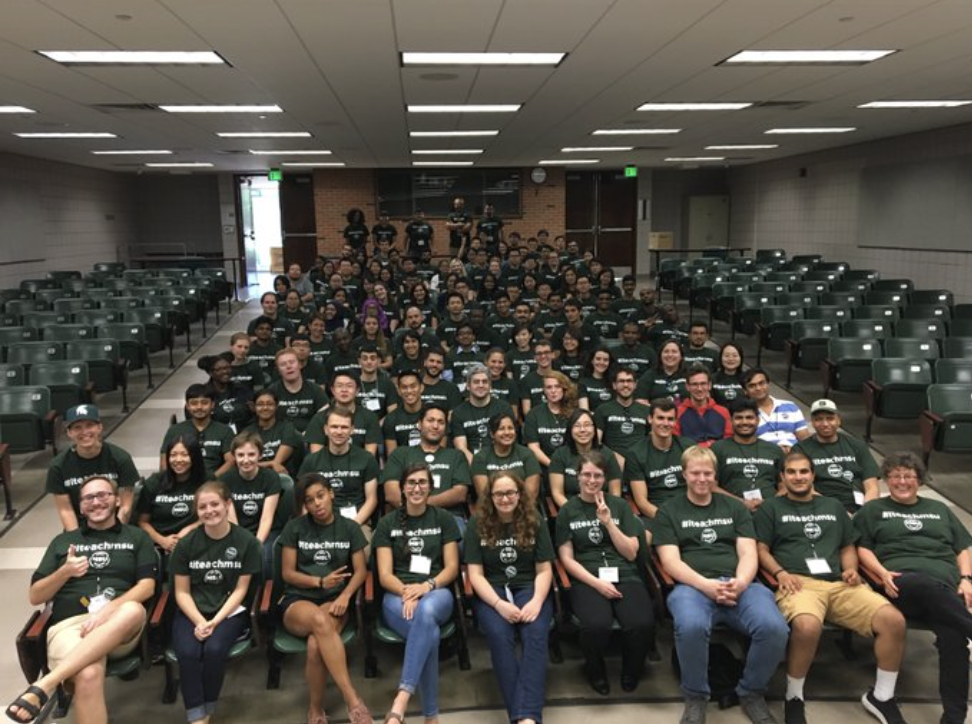We found 89 results that contain "adhd students"
Posted on: #iteachmsu



Posted by
over 1 year ago

ADHD is one of the most commonly
dsagas
In a 2016 Centers for Disease Control and Prevention study, scientists found that 6.1 million children aged 2-17 years living in the U.S. had been diagnosed with attention-deficit/hyperactivity disorder (ADHD), which is similar to previous en
Ages 6-11: Approximately 2.4 million children
Ages 12-17: Approximately 3.3 million children
dsagas
In a 2016 Centers for Disease Control and Prevention study, scientists found that 6.1 million children aged 2-17 years living in the U.S. had been diagnosed with attention-deficit/hyperactivity disorder (ADHD), which is similar to previous en
Ages 6-11: Approximately 2.4 million children
Ages 12-17: Approximately 3.3 million children
Disciplinary Content
Posted on: #iteachmsu



Posted by
over 4 years ago

Identify a student with a disability in your classroom. Specifically, identify a student who has difficulty in a typical classroom setting demonstrating knowledge. For example, the student might not be able to respond through typical response formats like written tests. To protect the privacy of your student, please use a first name only, or else use an alias.
Describe the student you selected, making sure to include:
Basic details about the student, including age, gender, first language, etc.
A description of the student's disability category and the barrier that interferes with the student’s ability to demonstrate learning
At least three of the student’s strengths
What the student is having difficulty with (such as verbal communication, handwriting, maintaining focus)
Describe the student you selected, making sure to include:
Basic details about the student, including age, gender, first language, etc.
A description of the student's disability category and the barrier that interferes with the student’s ability to demonstrate learning
At least three of the student’s strengths
What the student is having difficulty with (such as verbal communication, handwriting, maintaining focus)
Disciplinary Content
Posted on: #iteachmsu



Posted by
over 4 years ago

When asking students to explore issues of personal and social identity, teachers must provide safe spaces in which students are seen, valued, cared for, and respected. It is also important that students have opportunities to learn from one another’s varied experiences and perspectives. To create this learning environment, teachers need to skillfully draw on student experiences to enrich the curriculum.
Disciplinary Content
Posted on: Graphic representation



Posted by
almost 2 years ago

Student-Created Reviews
Students can create ways of reviewing previously taught content. For example, they may create
questions and answers for a card game such as Go Fish or Concentration.
Students can create ways of reviewing previously taught content. For example, they may create
questions and answers for a card game such as Go Fish or Concentration.
Disciplinary Content
Posted on: #iteachmsu



Posted by
over 4 years ago

Ask the student to submit a reflection about whether the accommodation helped with demonstrating knowledge. Whenever possible, we prefer to receive the student’s original work rather than a transcript or summary of the student’s reflection. The format of the reflection can accommodate the age or disability (e.g., written, audio) of the student. If, to meet this requirement, it is necessary to submit a transcript of a conversation with the student, please report the student’s responses verbatim.
Posted on: #iteachmsu



Posted by
over 4 years ago

Identify a student with a disability in your classroom. Specifically, identify a student who has difficulty in a typical classroom setting demonstrating knowledge. For example, the student might not be able to respond through typical response formats like written tests. To protect the privacy of your student, please use a first name only, or else use an alias.
Describe the student you selected, making sure to include:
png
Describe the student you selected, making sure to include:
png
Posted on: #iteachmsu



Posted by
over 4 years ago

ARTICLE: Strategies for ADHD: How Counselors Help Today’s Students Succeed
https://counseling.steinhardt.nyu.edu/blog/adhd-strategies-for-students/
https://counseling.steinhardt.nyu.edu/blog/adhd-strategies-for-students/
Navigating Context
Posted on: #iteachmsu



Posted by
about 2 months ago

o be easily distracted,
o have difficulty following directions,
o frequently lose materials, and/or
o have difficulty organizing tasks and materials.
Predominantly hyperactive/impulsive type.
The student may:
o Appear to be in constant motion,
o frequently fidget or move in his or her seat,
o become restless during quiet activities,
o leave his or her seat when expected to remain seated,
o interrupt others and classroom activities,
o talk excessively, and/or
o fail to follow classroom procedures (e.g., blurt out answers without raising hand).
Combined type.
The student may exhibit symptoms that include behaviors from both categories above.
In order for a student to be diagnosed with ADHD, symptoms must appear before age 12 and be exhibited across at least two settings. They must also have adverse effects on academic performance, occupational success, or social-emotional development (APA, 2013).
To add to the complexity of the diagnosis, children with ADHD are likely to have co-existing emotional, behavioral, developmental, learning, or physical conditions (Wolraich & DuPaul, 2010).
As a result of the behaviors listed above, students with ADHD are at greater risk of academic
difficulties, social/emotional issues, and limited educational outcomes.
o have difficulty following directions,
o frequently lose materials, and/or
o have difficulty organizing tasks and materials.
Predominantly hyperactive/impulsive type.
The student may:
o Appear to be in constant motion,
o frequently fidget or move in his or her seat,
o become restless during quiet activities,
o leave his or her seat when expected to remain seated,
o interrupt others and classroom activities,
o talk excessively, and/or
o fail to follow classroom procedures (e.g., blurt out answers without raising hand).
Combined type.
The student may exhibit symptoms that include behaviors from both categories above.
In order for a student to be diagnosed with ADHD, symptoms must appear before age 12 and be exhibited across at least two settings. They must also have adverse effects on academic performance, occupational success, or social-emotional development (APA, 2013).
To add to the complexity of the diagnosis, children with ADHD are likely to have co-existing emotional, behavioral, developmental, learning, or physical conditions (Wolraich & DuPaul, 2010).
As a result of the behaviors listed above, students with ADHD are at greater risk of academic
difficulties, social/emotional issues, and limited educational outcomes.
Disciplinary Content
